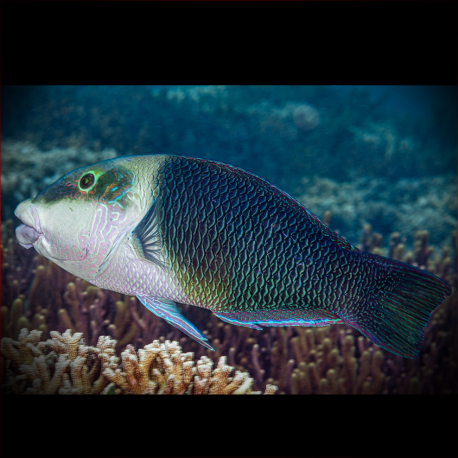More info
Datasheet
| Minimum Tank Size | 2000 litres / 528.34 US gallons |
| Maximum Size | 37.0cm / 14.57inches |
| Reef Compatible | Not reef safe |
| Temperament | Might be aggressive towards similar species |
| Temperature | 22.2°C / 71.96°F - 25.6°C / 78.08°F |
| Specific Gravity | 1.020-1.025 |
| Carbonate Hardness | 8-12 |
| pH | 8.1-8.4 |
General Description:The Hemigymnus melapterus, commonly known as the Blackeye thicklip or Thicklip wrasse, belongs to the Labridae family and hails from the Indo-Pacific region, ranging from the Red Sea to Polynesia. These fish can grow up to 37.0cm in size and are characterized by their large build and somewhat peaceful nature towards other fish.
Aquarium Suitability:Suitability for aquariums varies, with the Hemigymnus melapterus posing a threat to small invertebrates and requiring a large tank of at least 2000 liters when fully grown. They need to be fed at least four times a day, and their search for food in the sand may disrupt the tank's ecosystem.
Demands, Care, and Hardiness:These fish are considered delicate and require experienced caretaking due to their specific needs. Providing the correct nutrition can be challenging, and they are very sensitive during transportation and acclimatization.
Reef Suitability:The Blackeye thicklip is not considered reef-safe due to its predatory nature towards various invertebrates commonly found in reef environments.
Aquarium Setup:An aquarium housing a Hemigymnus melapterus should have excellent filtration to support the required frequent feedings. They also need ample space for swimming due to their active behavior.
Behaviour:These fish are known to be aggressive towards similar species, and their feeding habits include searching through the sand for prey, potentially causing water cloudiness in the tank.
Feeding and Diet:Their diet consists of larger crustaceans, other invertebrates, and small crustaceans like krill and mysis. Feeding multiple times a day with living prey can help with their adaptation to aquarium life.
Habitat and Distribution:In the wild, these fish can be found in the Red Sea, East Africa, Micronesia, and Samoa, among other regions in the Indo-Pacific.
Dimorphism:The Hemigymnus melapterus can change gender, with females transitioning to males as needed for reproduction within the species. Captive reproduction may be facilitated by providing living feed to aid in adaptation to tank life.

